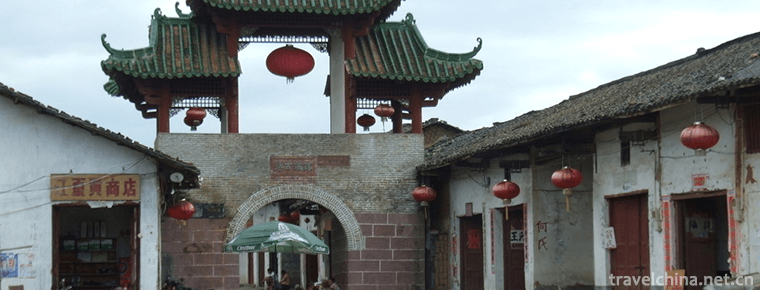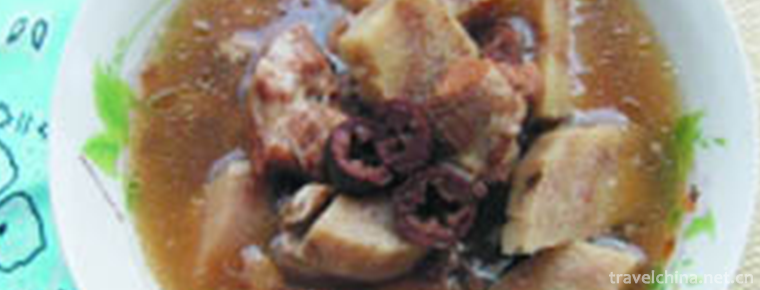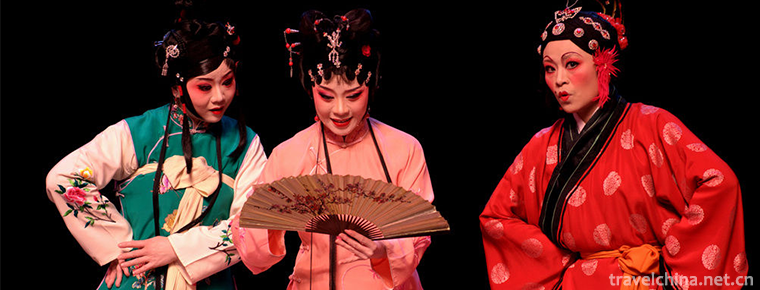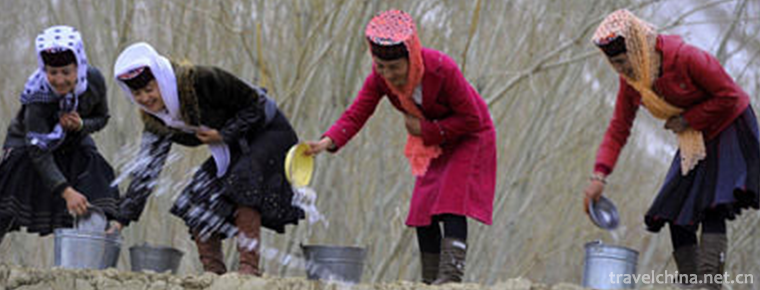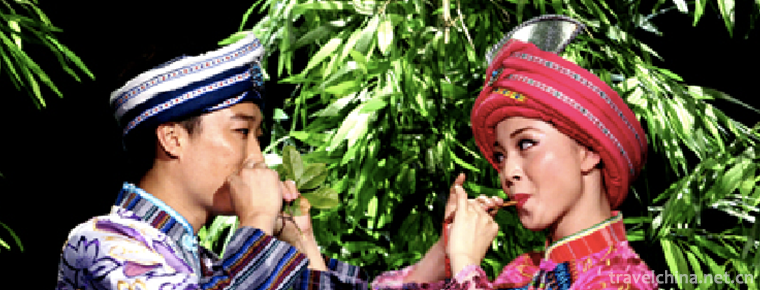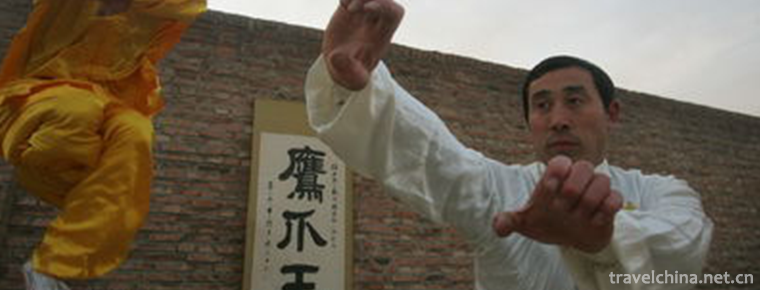Zigong Salt History Museum
Zigong Salt History Museum
Zigong Salt History Museum is located in the center of Zigong, Sichuan Province. It was built in 1959. It is one of the earliest professional museums in the history of Chinese museum development. It is still the only Museum of salt history in China. On May 18, 2017, it was promoted to the third batch of national first-class museums.
In March 2020, in order to thank the national medical staff for their dedication, the front-line medical staff and their families in the museum will be free of charge within the year.
History of development
Zigong salt industry history museum is a professional museum of Chinese science and technology history. Located in Zigong City, Sichuan Province, Ziliujing District, Fuxi River under the Longfeng Mountain. It was built in 1959. The site of the museum is the guild hall of the Western Qin Dynasty, which was built in the first year of Qianlong of Qing Dynasty (1736). This is a local guild hall funded by Shaanxi salt merchants, integrating the palace and folk architectural styles of the Ming and Qing Dynasties. The well preserved inscriptions, wood carvings, stone carvings and clay sculptures are the physical specimens for studying the social life, economic situation and religious art of the Qing Dynasty before the Opium War.
The birth of venues
In 1959, Comrade Deng Xiaoping initiated the establishment of Zigong Salt Industry History Museum in Xiqin guild hall. From scratch, after 41 years of hard work, Zigong Salt History Museum has grown vigorously in the persistent pursuit, and has become the only salt industry history museum in China with a certain reputation at home and abroad.
Initial stage of establishment
Zigong Salt History Museum was born 10 years later than the motherland, but its fate is closely connected with the Republic. At the beginning of its construction, there were only about 10 cadres, staff and workers in the hall, and there was no basic display, and there was a lack of collections, funds and professionals. Museum work started under difficult conditions.
First of all, starting from the foundation, we organized the maintenance of Xiqin guild hall and the rescue of salt historical relics. The older generation of workers went deep into the salt plant one after another. Relying on the support of salt industry units in the city and the warm help of old salt workers, they carried out the collection of salt industry historical relics, and soon collected and collected a number of salt industry historical relics and local cultural relics represented by Zigong Salt Drilling and drilling tools.
On this basis, the first basic exhibition of salt industry history was launched in 1962. After several adjustments and ups and downs, this exhibition laid the rudiment of the basic display of the salt industry history museum, and left a deep brand of the times.
Be devastated
After the beginning of the cultural revolution, the salt industry history exhibition was completely closed, and the museum cause was devastated. Under extremely difficult conditions, the staff skillfully covered and protected a large number of wood carvings and stone carvings in the hall under the name of "red ocean". It has laid a foundation for the restoration and development of museums after the Third Plenary Session of the Eleventh Central Committee.
Revitalization again
After the end of the cultural revolution, the museum cause appeared vitality. Especially after the Third Plenary Session of the 11th CPC Central Committee, Zigong Salt Industry History Museum has embarked on the road of revitalization.
Bathed in the spring breeze of the Third Plenary Session of the Eleventh Central Committee of the Communist Party of China, with the shift of the party's work focus, the staff of the museum have invested in the design, production and exhibition of the exhibition history of well salt production technology. After the exhibition in 1981, the museum has been constantly revised and improved. After three major adjustments, especially the renovation in 1986, the museum finally presents its unique historical, scientific and artistic values to the world. In the exhibition line of more than 300 meters, the grand picture of well salt industry centering on Zigong for more than 2000 years in terms of drilling, brine extraction, natural gas exploitation and salt making is vividly displayed, which truly represents the outstanding contribution, outstanding achievements and great creativity of the Chinese nation in human drilling technology, and increases the participation, interest and scientificity of the exhibition, which is deeply appreciated The high praise of the public has opened a new way for the professional museum to do a good display.
Scientific research
In order to meet the needs of exhibition and museum development, scientific research work was carried out simultaneously, and the Department of well salt history research was established. Dozens of papers have been published in cultural relics, Sichuan cultural relics, research on Chinese social and economic history, Journal of Sichuan University, and Journal of China History Museum.
Special research
From the mid-1980s to the early 1990s, the Museum organized scientific research forces to engage in special research on the history of well salt. He has successively cooperated with the scientific and technological personnel of the salt industry department to undertake and complete the compilation of the book "history of Chinese well salt science and technology" and the compilation of "Zigong Salt Industry records", a key scientific research project of philosophy and Social Sciences in Sichuan Province during the "Seventh Five Year plan". In 1990, a comprehensive and systematic monograph on the history of Sichuan salt industry was published by Sichuan people's publishing house. After the publication of these achievements, it has aroused great repercussions, and won the second prize of Sichuan Province philosophy and Social Sciences excellent scientific research achievements, the second prize of national local chronicles excellent achievements, and the first prize of Zigong City excellent scientific research achievements of philosophy and social sciences. So that our museum in the history of well salt research, walking in the forefront of the country.
In the process of studying the history of well salt, since the mid-1980s, the museum began to combine scientific research with the investigation of salt industry sites and relics, as well as the rescue and protection of salt industry cultural relics. It not only obtained first-hand information for scientific research, but also expanded the scope of cultural relics collection from Zigong to Sichuan, and collected a number of representative early dagoujing and Zhuo Tools and equipment for barrel well production.
In terms of cultural relics research, we have completed the "Research on ancient well salt tools in China", which was listed as a key scientific research project of Sichuan Provincial Science and Technology Commission and Zigong science and Technology Commission during the "Seventh Five Year Plan". This is the first monograph on drilling and production tools for well salt in ancient China. It was published by Shandong science and Technology Press in May 1990 and won the second prize of Sichuan Science and Technology Progress Award and the first prize of China Book Award.
With the continuous emergence of scientific research achievements, the journal "Journal of well salt history" (internal issue), which was founded in 1976, was renamed "Research on the history of salt industry" in 1986, and was published in China; in 1988, it was changed into a quarterly journal, which was published regularly and published to the public at home and abroad. At the same time, since the mid-1980s, the museum has successively and publicly published the series and reference books on the history of Sichuan well salt, the collection of Chinese salt industry history, the index of Chinese salt history works, and the selected works of contemporary salt industry.
During this period, the emergence of a number of well salt history and cultural relics research results represented by the history of Well Salt Science and technology in China, the research on ancient well salt tools and Zigong Salt Industry records, the introduction of the basic display of well salt production technology development history, and the publication of the library journals had a wide impact on the academic and Museum circles.
In 1980, the quarterly magazine "Museum" of UNESCO introduced Zigong Salt Industry History Museum in detail. In 1983, the museum was introduced as one of the seven most representative museums in China at the conference of ICOM held in London. In 1990, the museum successfully held the International Symposium on the history of China's salt industry.
Planning
During this period, the museum also began the exploration of "supplementing literature with literature", striving to create conditions to lay a solid foundation for the development of the cause. Since the late 1980s, after years of exploration and development, it has begun to take shape. Without asking for any money from the finance department, lending money from the bank, and without specialized personnel, the library has opened more than 10 "supplementary articles" projects, creating conditions for the development of business work.
Since 1992, with the publication of Deng Xiaoping's talk in the South and the further emancipation of his thoughts, Zigong salt industry history museum is determined to forge ahead and deepen the reform, ushering in the spring of career development. All work has been comprehensively promoted and all undertakings have been further developed. First of all, further emancipating the mind, changing ideas, formulated the development plan of Zigong Salt Industry History Museum, which determined the general goal of building the museum into a first-class national salt history museum with Chinese characteristics and a certain international reputation in this century or the beginning of the next century Based on the historical relics and materials of the salt industry, including sea, lake and pond salt, we should carry out research on the history of salt industry, organize exhibitions and temporary exhibitions of the history of China's salt industry, popularize scientific knowledge, and educate the people on historical materialism, patriotism and socialism, so as to serve the construction of socialist material and spiritual civilization. Under the guidance of this working policy, our library has started to promote all kinds of work in an all-round way.
In 1993, the reform was first carried out in the library. The old personnel system, administrative management system, scientific research system and distribution system were reformed, and the new competition and incentive mechanism were introduced to fully mobilize the enthusiasm, initiative and creativity of the staff of the library. All business work has leaped to a new level.
In the field of scientific research, since 1993, the museum began to organize and implement scientific research projects on the history of salt industry in a planned and purposeful way, and implement project management. He has successively organized and published monographs and books such as Zigong salt of China, theory of Yunnan Salt History (cooperation), history of Chinese drilling science and Technology (cooperation), and ancient drilling and gas production technology of China. He has carried out research on the history of China's salt industry, economy of China's salt industry, Chinese salt culture, and dictionary of Chinese salt industry history The system of salt industry history research has been initially formed, which has been widely concerned and praised by academic circles.
At the same time, we have strengthened the systematic research on the national key cultural relic protection unit - Xiqin guild hall. We have completed the book wood carving and stone carving art of Xiqin guild hall, which is a monograph on the systematic study of the architectural carving art of the Museum (to be published).
In terms of cultural relics work, with the development of the cause and the further expansion of the scope of work since 1994, the Three Gorges Reservoir area, Yunnan, Hebei, Shanxi and other places have been organized for many times, and a number of cultural relics, specimens and materials of well (mineral) salt, sea salt and pool salt have been collected, so that the collection of the museum is gradually enriched and improved.
On the basis of constantly enriching and improving the collection, we have also strengthened the protection of cultural relics, carried out research on the protection technology of cultural relics, and implemented scientific protection. With Sichuan Provincial Department of culture and Chengdu University of science and technology, the project of anti rust protection of iron tools in Zigong salt industry was studied, and the anti rust treatment formula of clfj was developed. In 1993, it was appraised by an expert group organized by the Provincial Department of culture, and was used for the protection of the ancient drilling and well control tools in the museum, effectively curbing the corrosion of these cultural relics, and providing a guarantee for the scientific protection of the world's only ancient drilling and control tools. In addition, we also studied the protection technology of stone carvings and the restoration technology of pottery. These achievements have played a positive role in the scientific and effective protection of cultural relics.
Holding exhibitions
In 1995, with the gradual establishment of the socialist market economy, people's demand for spiritual culture is also growing. Since 1987, the exhibition has been faced with severe challenges once again; the halls are cold and the audience is declining, and the educational function of the museum can not be brought into full play. In view of this, the museum, in the case of financial constraints, raised funds from various sources to comprehensively update the basic display of salt making. With modern display techniques, three-dimensional, open and large-scale landscape expression techniques, the introduction of modern art light source, the use of new technology, new materials, new technology, successfully reproduced the well salt production in Han Dynasty, natural gas exploitation and salt making in Qing Dynasty in its heyday, as well as the advanced vacuum salt making in modern times. The reformed exhibition has changed the old style of salt industry history display in the past, added vigor and vitality to the audience, and opened a new era for the development of professional museum display.
At the same time, it also vigorously held temporary exhibitions to give full play to the educational function of the museum. Since 1992, more than 100 temporary exhibitions have been held, making positive contributions to the promotion of excellent national culture, the education of revolutionary tradition and patriotism.
During this period, the propaganda and education work of the library has also been fully developed. Especially in 1998, a new breakthrough was made in propaganda and education. From the traditional way of waiting for the audience to come to the door for "teaching", it has moved to go out of the museum to "invite" and "find" the audience to "teach". For the first time, it signed the Convention on jointly building patriotism education base with 12 schools in the city. After the signing of the contract, the museum made every effort to introduce and organize high-quality exhibitions, do a good job in reception, explanation and service, so that the number of student audience doubled. In addition, the museum also sent experts, professionals and commentators to the army, universities, primary and secondary schools to preach the history of salt industry, Zigong City, calligraphy art, etc. In the process of "inviting" and "looking for" the audience, the educational potential of the museum has been further explored, making new contributions to the dissemination of socialist spiritual civilization.
Millennium salt city
Zigong Salt History Museum is a beautiful miniature of the Millennium salt capital. With its magnificent architecture and rich connotation, it has received countless Chinese and foreign audiences and distinguished guests in the past 41 years. Since the Third Plenary Session of the 11th CPC Central Committee, the Xiqin guild hall and Wangye temple have received about 6 million visitors. He has received dozens of Party and state leaders, such as Wan Li, Qiao Shi, Fang Yi, Zhang Aiping, Li Tieying, and other well-known people, such as Ba Jin, Ren Zhigong, sun Daolin, Zhao Zhongxiang, Wang xijue, and run run run run.
In addition, the enterprise management of the operating departments and the contract responsibility system have been implemented, which has greatly mobilized the enthusiasm of the staff and workers. Each year, the revenue of "supplementary articles" is more than 200000 yuan, which has won funds for the development of the museum, greatly alleviated the prominent contradiction between the shortage of funds and the development of the cause, and enhanced the hematopoietic function of the career development.
Since the establishment of the museum, the museum has carried out large-scale maintenance on the site of the national key cultural relics protection unit Xiqin guild hall and Sichuan provincial cultural relics protection unit Wangye temple, which has effectively protected these two buildings in Qing Dynasty, leaving a bright and colorful scene for Zigong, a famous historical and cultural city!
Today, 40 years later, Zigong Salt Industry History Museum has owned the national key cultural relics protection unit Xiqin guild hall and its affiliated building, and the provincial cultural relics protection unit Wangye temple. The museum has 50 formal staff, 31 staff with college education or above, and 19 middle and senior professional and technical personnel. It has six departments, two departments and one section, which is responsible for scientific research, cultural relics protection, ancient building maintenance, exhibition and exhibition, publicity and education, publication of Library and magazine, "supplement literature with literature", and security.
Since 1993, the reform and the establishment of competition and incentive mechanism have fully mobilized the enthusiasm and creativity of the staff of the library. All kinds of talents have come to the fore. Various achievements have been made continuously. All kinds of honors have come unexpectedly. All kinds of work has been comprehensively promoted.
Advanced talents
More than 100 person times have been awarded by municipal government departments. Among them, more than 50 people were awarded by the Ministry, provincial and municipal governments. Zigong City has emerged outstanding young and middle-aged talents with outstanding contributions, the city's "Top Ten Outstanding Youth", the province's "outstanding youth", the Ministry of culture's advanced workers, outstanding experts, and national security advanced individuals. Among the scientific research achievements of the museum, 35 people have won the awards for achievements in philosophy and Social Sciences, awards for scientific and technological progress and Mao Yisheng Science and Technology Fund awarded by provincial, ministerial and municipal governments. In 1996, research on salt industry history was rated as the first-class Journal of Social Sciences in Sichuan Province.
The museum has won the national excellent prefectural and county-level museums, the advanced collective of the national cultural and museum system, the provincial advanced collective of "supplementing literature with literature", the provincial civilized unit, the provincial patriotic education base and the popular science education base, and the wangyemiao music tea house was rated as the national civilized entertainment hall.
"It's a long way to go. I'll go up and down and look for it.". With Deng Xiaoping Theory and the spirit of the 15th National Congress of the Communist Party of China as the guidance, Zigong Salt History Museum will continue to open up, actively innovate, shoulder the sacred mission given by history, push forward the cause of building a socialist museum with Chinese characteristics, and strive to re create brilliance!
awarding
On May 18, 2017, it was awarded the third batch of national first-class museums in the capital museum.
Collection
Yankou book
The historical relics of salt mainly reflect the production tools and equipment for well salt drilling, brine extraction, brine transportation and salt production, the contracts and accounts in the process of salt production and operation, and the original records of drilling with traditional methods at that time.
Well control tools
In well salt production tools and equipment, a large number of well salt drilling and control tools. There are more than 130 kinds of well salt drilling tools from 1736 to 1795 and more than 400 pieces. These tools vary in shape, weight and length. Some are as long as 5 meters, others are less than 1 meter; some are as heavy as hundreds of kilograms, and others are light.
Tool classification
According to the use, the drilling and treatment tools include drill bits for normal drilling, bits for special operations, fishing tools, cavity filling tools, logging tools and wood column repairing tools. Among these tools, the drilling tools are long and heavy, with sharp edges. They can not only meet the needs of drilling different rock layers and different well sections, but also meet the requirements of special underground operations. The salt wells were drilled for more than 1000 meters, which was a brilliant achievement with a leading position in the world at that time.
Fishing tools
Fishing tools are ingenious in conception, exquisite in manufacture, various in variety and magical in each. They can successfully take out all kinds of objects falling into the well and eliminate the accidents occurred in the well. In 1835, the craftsmen of Zigong salt field used these tools to create a miracle in the history of drilling in the world, and built the world's first well with a depth of more than 1000 meters, making outstanding contributions to the Museum of human civilization. The collection of drilling tools is not only the crystallization of wisdom of the working people in China, but also the carrier of ancient science and technology in China. It shows the incomparable exquisite skills and level of ancient drilling technology in China.
Contract book
The salt contracts and operating books are also valuable historical relics of the salt industry. The contract of salt industry in the collection was formed from the Qianlong period of Qing Dynasty (1736-1795) to the 37th year of the Republic of China (1948). In the past two hundred years, China's feudal economy has evolved into a semi colonial and semi feudal economy. These contracts represent several aspects of social and economic activities, reflect the management of Zigong Salt Industry and the relationship between jingzao and tenancy since the Qing Dynasty. They are valuable historical materials for studying the development and evolution of production relations, especially the capitalist sprouting of well salt industry Research value. The account books of salt industry systematically reflect the production and management of well salt industry, which is a treasure in the history of salt.
Yankou book is a precious cultural relic reflecting the achievements of salt well drilling since Qing Dynasty. It records the preparation before drilling, the tools used in each working procedure in the process of sinking, the footage of drilling every day, the rock conditions, the causes of accidents in the underground and the measures and methods adopted to deal with the accidents. The traditional drilling technology and geological data preserved in Yankou book are rare. They are precious documents for the study of drilling technology, geological drilling logging and ancient science and technology since Qing Dynasty. They are of high scientific and historical value.
Introduction to the library
In April 1976, the Journal of well salt history was founded, which was published internally and published irregularly. By the end of 1985, 14 issues had been published.
In 1986, with the continuous emergence of research results, the journal "Well Salt History Communication" received attention from many aspects, so it was renamed "Research on the history of salt industry", which was published publicly and published irregularly.
In 1988, it was changed into a quarterly journal, which was published on a regular basis and was publicly distributed at home and abroad. The main columns include: special research, regional salt industry, salt industry science and technology, salt industry economy, foreign salt history, etc.
In 1996, it was rated as the first-class Journal of Social Sciences in Sichuan Province. By the end of 2000, 53 issues had been published.
Venue achievements
Over the past 40 years since its establishment, the museum has made important achievements in the collection, research, display and protection of historical relics of China's salt industry, mainly well salt. It has become the leader of nearly 2000 museums in China, and has been successively rated as the national excellent Prefecture and county-level museums and the national advanced collective of cultural and museum system. UNESCO's Museum quarterly has made a special introduction to the museum. The site of the museum is composed of two ancient buildings, one is the national key cultural relics protection unit Xiqin guild hall and its ancillary buildings, covering an area of 6303 m2; the other is Wangye temple, a cultural relics protection unit in Sichuan Province, covering an area of 705m2.
research meaning
The museum collects historical books, documents and archives related to the development of well salt, including 1322 objects and tools. Among them, there are 503 traditional drilling and repairing tools for salt wells, which are the only complete group of ancient drilling tools in China. These tools of different periods, shapes and uses reflect the well salt technology and technology created by salt workers of all ages and mark the development of drilling technology in China. It is of great value to study the history of science and technology and social economy to collect the operating contracts, Yankou books and account books of the Qianlong period to the Republic of China.
The development history of well salt production technology shows the evolution and development of well salt production technology from aspects of drilling, brine extraction, natural gas exploitation and salt making. It shows the ancient well salt production technology centered on deep well drilling technology, and embodies the wisdom and creative ability of the working people of all ages. The Qing Dynasty shaft sinking machine frame on display is operated by human, and the iron drill bit is used to impact the rock at the bottom of the well. The salt well can be drilled to a depth of more than 1000 meters. There are more than 10 kinds of drill bits used to drill various rock layers. These objects are important cultural relics in the history of drilling in the world.
The museum also protected and restored the Xiaoqiao well excavated in 1772 outside the museum. In 1835, it reached 1001.42 meters, which was the first well in the world to break through the kilometer depth. Wangye temple, a salt merchant guild hall, is an on-site display reflecting the production and transportation of well salt in Qing Dynasty. There is a research on the history of well salt.
Visit information
Open information
The museum basically displays the history of well salt production technology, and can hold 1-4 temporary exhibitions at the same time. It is open to the public all year round and receives about 200000 visitors each year.
geographical position
Address: No.107 Jiefang Road, Zigong City, Sichuan Province.
Free policy
In March 2020, in order to thank the national medical staff for their dedication, the front-line medical staff and their families in the museum will be free of charge within the year.

-
Pearl Lane
Zhuji Lane, located in Zhuji Village, Zhuji Town, Nanxiong City, Guangdong Province, covers an area of about 3 square kilometers. Zhuji Ancient Lane is one of the national 4A scenic spots and one of t.
Views: 232 Time 2019-03-20 -
Eight claw Fish Powder Pueraria Decoction
500 grams of Pueraria Thunb, 50 grams of octopus, 400 grams of pork legs, four candied dates, and 1/6 peel..
Views: 131 Time 2019-03-27 -
Construction Techniques of Hakka Tulou
Hakka Tulou building construction technology, Fujian Longyan City Nanjing County, Huaan County local traditional building construction technology, one of the national intangible cultural heritage..
Views: 138 Time 2019-05-09 -
Liyuan Opera
Liyuan Opera is one of the traditional operas in Fujian Province. Liyuan Opera originated in Quanzhou in the Song and Yuan Dynasties. It is also called "the voice of Fujian and Zhejiang" and.
Views: 156 Time 2019-05-12 -
Tajik Water Diversion Festival and Seeding Festival
In Tashkurgan Tajik Autonomous County of Xinjiang, Tajik Water Diversion Festival and Seeding Festival are Tajik agricultural festivals. In Tajik, the sowing Festival is called "Hamozivast" .
Views: 225 Time 2019-06-17 -
Tujia Nationalitys Quinone
"Tujia Diaoqu" is not only a wind instrument with peculiar structure, but also a genre of folk songs. At the same time, in Western Hunan, it is also the name of common music cards shared by .
Views: 141 Time 2019-06-23 -
Eagle Claw
Eagle Claw Turn Boxing is a new type of Chinese traditional boxing, which is derived from the Eight Flash Turn. It is also a famous Chinese national master, Mr. Chen Zizheng (1878-1933) (from Li Linzh.
Views: 184 Time 2019-07-14 -
Xichang College
Xichang College is located in Liangshan Yi Autonomous Prefecture, Sichuan Province, which is the largest Yi inhabited area in the country "spanning thousands of years step by step". It is a .
Views: 150 Time 2019-08-31 -
Huahu Lake
Huahu is located on the 213 national road between Ruoergai in Sichuan Province and Langmu temple in Gansu Province. It is a natural Haizi on the grassland of GER dam. Geer dam is the second largest grassland in China after Hulunbeir Grassland.
Views: 146 Time 2020-11-07 -
Leshan science and technology
By the end of 2018, Leshan had 12 provincial engineering technology research centers and 33 municipal engineering technology research centers. There are 83 high-tech enterprises and 353 Municipal Science and technology enterprises. There are .
Views: 175 Time 2020-12-17 -
Climate of Nanchong
Nanchong belongs to the subtropical humid monsoon climate. Compared with the Yangtze River Valley in the south of the basin, the temperature is relatively low, the rainy season is longer and the rainstorm is more. Compared with the Western Sichuan plain.
Views: 266 Time 2020-12-17 -
Biological resources in Dazhou
There are more than 400 species of vertebrates in Dazhou City, including 60 kinds of mammals, 230 kinds of birds, 14 kinds of reptiles, 10 kinds of amphibians and 85 kinds of fish. There are 52 species of national and provincial key protected wild an.
Views: 363 Time 2020-12-20
